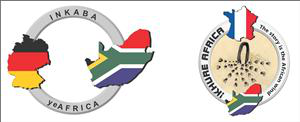Speaker
Mrs
Rookshana Ebrahim-Trollope
(University of Cape Town)
Description
Natural seismicity within South Africa is limited to low-moderate magnitude intraplate activity broadly grouped into clusters such as Ceres, Koffiefontein, Lesotho and Namaqua clusters or swams. Intraplate seismicity is ~ 10 % of global natural seismicity with a smaller Mmax in South Africa of about ML = 6.3. The vast majority of “recorded” seismicity in South Africa occurs in the centre of the very stable Kaapvaal Craton within the Witwatersrand gold basin. These events are almost wholly induced by mining despite some suggestions of triggering of paleoenergy. The maximum magnitude induced event recorded to date was about a ML = 5.2 event.
Methods and techniques for studying induced events have been transferred directly from earthquake seismology since no systematic differences have been found, though many have been observed. This includes failure models, magnitude and source parameter estimates and statistical hazard quantifications. Major differences between natural and induced events are details of heterogeneity and the proximity of infrastructure and people to the source. Natural events are up to 10’s km while induced events are within 100’s of meters. The Richter or local magnitude scale (ML) has been used, with some modifications, to measure the size of earthquakes since 1935. It has long been recognised that this single-number representation of a multi-dimensional phenomenon is inadequate and cannot fully describe the energy released by an earthquake or the displacement caused by it. This study aims to identify and quantify the effect of various factors on estimates of the size of events and how this affects hazard quantifications. I propose three parameters to eatimate the size of a seismic event namely, (i) Area of the source (m2), (ii) Energy per unit area of the source (KJ/m2and (iii) Azimuth of strongest shaking (degrees).
KEYWORDS: Seismic magnitude, spectra and source parameters
Primary author
Mrs
Rookshana Ebrahim-Trollope
(University of Cape Town)
Co-authors
Dr
George Smith
(UCT)
Dr
Raymond Durrheim
(WITS)

